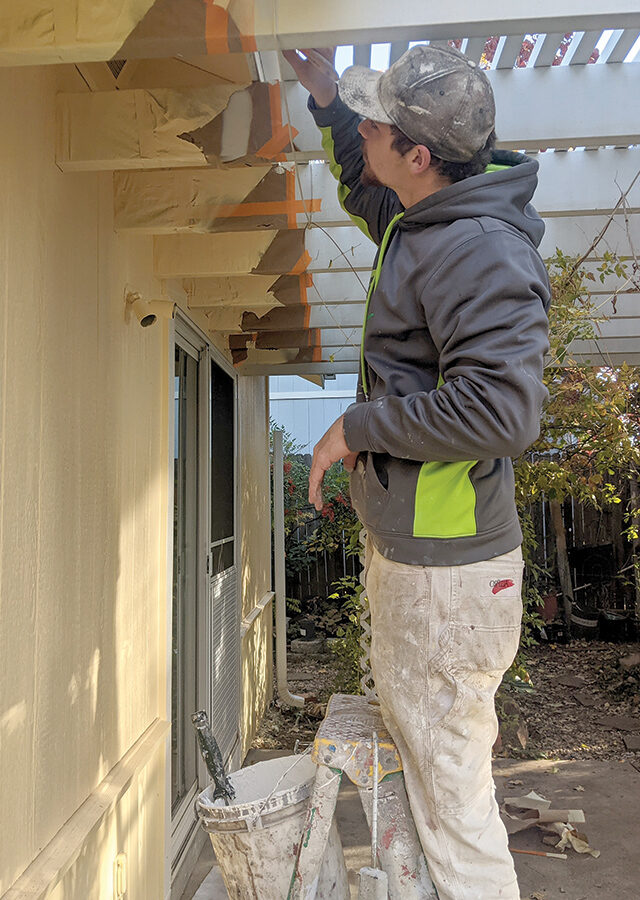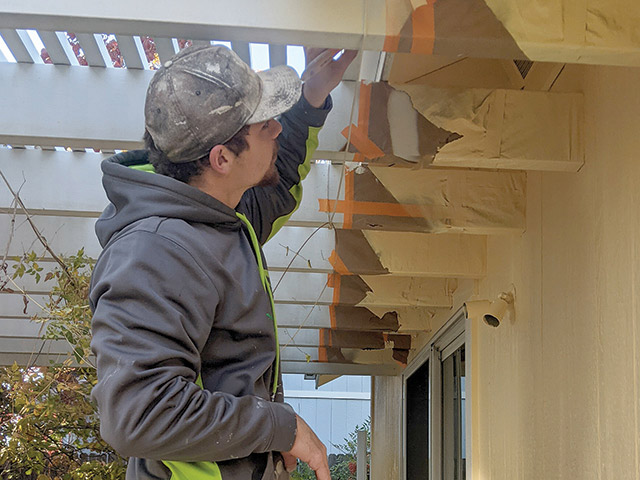

(Part Two of a three-part feature)
The paint you choose for your business or home can help solve the climate crisis. That’s because most paints contain volatile organic compounds, or VOCs, which gas off and contribute to the warming of our atmosphere.
You can smell VOCs when you paint a room or get into a new car. They are solvents used in thousands of things such as plastics, cleaning solutions, scented candles and body lotion. VOCs make paints easier to apply and give them better resistance to sunlight and the effects of freezing and thawing, according to the manufacturer Sherwin-Williams. But companies have been working on alternatives for two decades, and they’ve developed durable paints with low or nearly-zero VOCs to safeguard both the environment and people’s health (indoors, the off-gassing of VOCs can cause a range of allergic reactions from mild to severe).
In 2000, federal law required paint manufacturers to lower the VOCs in their products. “Now, they have zero-VOCs as well,” says Nevada County painter Jason Gilliam. He and partner Shane Manley operate Jason Gilliam Painting/New Look Painting, and they’re enthusiastic about their industry moving toward environmentally sustainable products.

“We are getting more and more people asking us about no-VOC paints,” Manley said. Those can be used for smaller business structures and residences, but many industrial applications do require the low-VOC products, Gilliam adds. They’re using low-VOC paints at the remodeled McKnight Crossing shopping center in southern Grass Valley.
“We’re here to help you get through any type of painting in this more-sustainable direction,” Gilliam says.
Jason Gilliam Painting/New Look Painting
Jason Gilliam & Shane Manley
(530) 210-9655
(530) 559-7255
Climate Change 3-part series:
